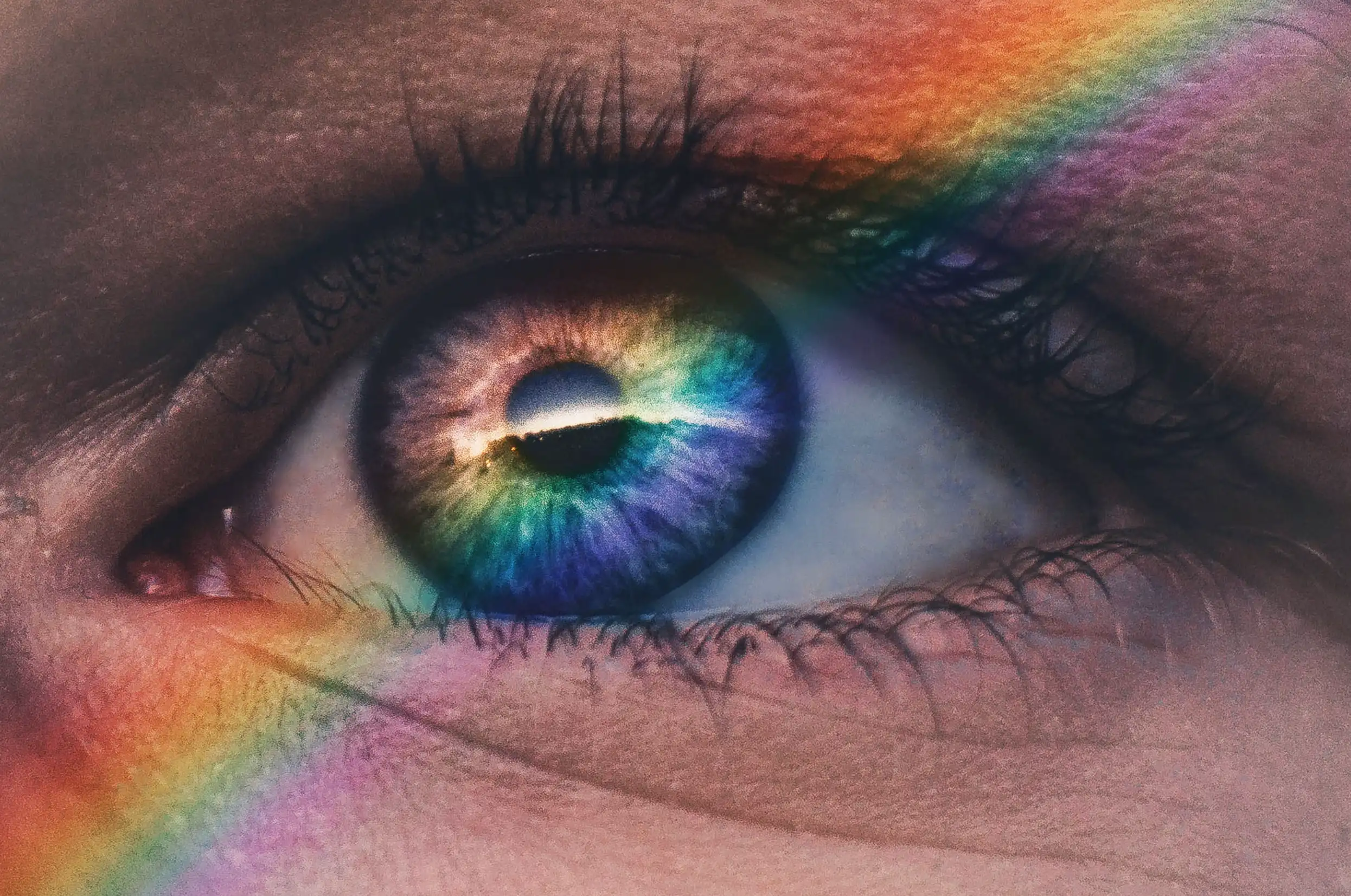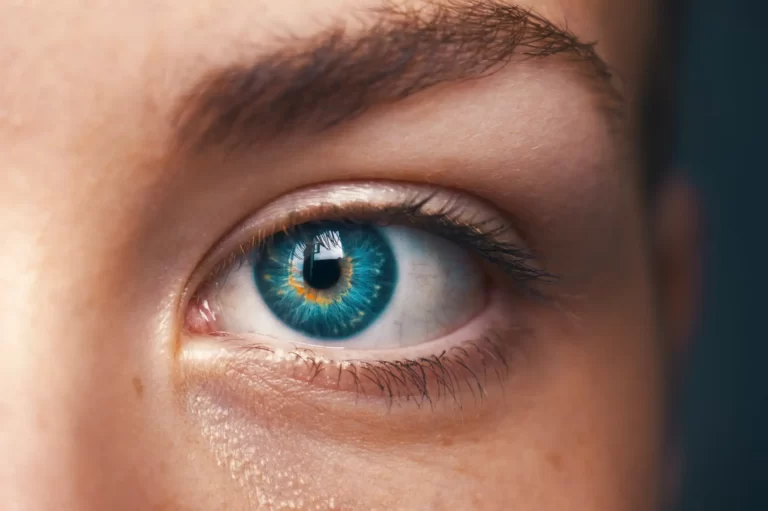How to Pass Color Blind Test: Proven Strategies and Tips
Many people struggle with color blindness and its effects on daily life. For those who need to pass a color blind test, knowing the right strategies can make a significant difference. The most effective way to pass a color blind test is to be aware of techniques that can enhance color perception, such as optimizing lighting conditions and using color-correcting contact lenses.
Understanding the basics of color blindness can help individuals approach testing with confidence. There are various tests available, such as the Ishihara test, which evaluates color perception. With the right preparation and tools, even those with color blindness can improve their chances of passing these tests.
Key Takeaways
- Knowing techniques to enhance color perception is crucial for color blind tests.
- Color-correcting contact lenses are the best way to passing color vision test.
- Understanding color blindness leads to better coping strategies in everyday situations.
Understanding Color Blindness
Color blindness affects how individuals perceive colors, leading to challenges in distinguishing certain shades. It involves various types and causes that can impact daily life.
Types of Color Vision Deficiency
There are several types of color vision deficiencies. The most common are red-green color blindness, which includes protanopia and deuteranopia.
- Protanopia is a condition where individuals cannot perceive red light.
- Deuteranopia affects the ability to see green light.
Another type is blue-yellow color blindness, which is less common and includes tritanopia.
Lastly, achromatopsia is a rare form where one sees no color at all, resulting in a grayscale view of the world. Understanding these types helps in identifying how color blindness affects each person differently.
Causes and Prevalence
Color blindness is usually hereditary, passed down through genes, particularly on the X chromosome. This is why it’s more common in males than females.
In fact, about 1 in 12 men and 1 in 200 women have some form of color vision deficiency.
Environmental factors can also play a role, including damage to the retina or neurological conditions.
Recognizing these causes can help individuals understand their specific situation and seek appropriate support when needed. This knowledge is vital for coping effectively with daily challenges.
Diagnosing Color Blindness
Color blindness can be diagnosed through several tests that analyze how a person perceives colors. Each test offers a different approach, using images and color arrangements to determine the type and degree of color vision deficiency. These methods provide reliable results and help individuals understand their color perception better.
Ishihara Color Test
The Ishihara Color Test is one of the most commonly used tests for diagnosing color blindness. It consists of a series of plates, each featuring a circle filled with dots of different colors and sizes. Within these dots, there is usually a number or pattern that individuals with normal color vision can identify.
Those who are color blind, especially with red-green deficiency, may struggle to see these numbers. This test is quick and simple, making it ideal for initial screenings. It is widely available, both in physical form and through online color blind tests.
Farnsworth Munsell 100 Hue Test
The Farnsworth Munsell 100 Hue Test involves arranging colored caps in order of hue. This test examines how well a person can discriminate between subtle color differences. Participants are given several color caps and must place them in a line from the least to the most similar.
The results indicate if there are issues with color discrimination. It is a bit more complex than the Ishihara test but provides detailed insights into the individual’s color perception. This test is particularly useful for identifying specific types of color vision deficiencies.
Covisn Colorblind Test
The Covisn Colorblind Test is an online test that uses images similar to the Ishihara plates. It consists of various color plates designed to reveal color vision deficiencies through quick visual exercises.
Participants look at each plate to determine whether they can see certain figures or numbers. This test is convenient as it can be taken from home, offering immediate feedback. It serves as a preliminary check before seeking professional diagnosis.
Dvorine Color Blind Test
The Dvorine Color Blind Test is another effective tool for diagnosing color blindness. This test also uses color plates, but it includes different patterns compared to the Ishihara test. The plates feature dots or shapes that are organized in specific ways to reveal color perception issues.
Individuals will be asked to identify letters or shapes among colored dots. The results help determine the type of color blindness present. This test is also used in various educational and professional settings to assess color vision capabilities.
Nagels Anomaloscopes
Nagels Anomaloscopes are specialized instruments for diagnosing color blindness. This test measures the ability to mix wavelengths of light to match a reference color. Participants adjust knobs to create a color that matches a standard hue.
The device can effectively identify red-green color blindness by determining how much of each color is needed to achieve a match. It provides a highly accurate assessment of an individual’s color vision and is commonly used in research and clinical practice.
Enchroma Color Test
The Enchroma Color Test is a relatively new approach that involves using glasses designed to enhance color perception. While this test isn’t for diagnosing color blindness itself, it highlights how certain individuals may experience color more vividly with the right lenses.
Participants are asked to view various images while wearing these glasses. This test helps in understanding how color vision deficiencies might be corrected to some extent. It is a modern approach that combines technology with color perception analysis.
Pilestone Online Color Blind Test
The Pilestone Online Color Blind Test provides an accessible way to evaluate color vision. It consists of various color plates similar to those used in traditional tests, which are available online. The test allows individuals to quickly assess their color perception in the comfort of their own home.
Once completed, results show potential color vision deficiencies and guide users on whether further testing is necessary. It is a useful starting point for anyone curious about their color vision.
How to Passing Color Blind Tests with Easy
Passing a color blind test can be challenging for those with color vision deficiency. However, there are methods that can help improve one’s chances. This includes using color blind lenses, training beforehand, and leveraging technological aids.
Usage of Color Blind Lenses
Color blind lenses are specialized eyewear designed to enhance color perception. These lenses work by filtering specific wavelengths of light, making it easier for individuals to distinguish colors. Some popular brands include Colorkinds colorblind contact lenses, which can be worn daily.

When using color blind lenses, it’s essential to practice wearing them before taking a test. This can build confidence and help one adjust to the altered perception of colors. People should ensure the lenses are fitted correctly and provide optimal visual clarity.
Training and Preparation
Training can significantly help in preparing for a color blindness test. Familiarity with the types of patterns and colors seen in color blind tests, such as those used in the Ishihara test, is crucial.
Individuals can find online color blind tests that simulate real test scenarios. Regular practice can improve color recognition skills. They should also pay attention to colors and patterns in daily life to enhance their ability to differentiate shades.
Engaging in visual exercises can strengthen the brain’s ability to process colors. Color matching games and mobile apps designed for color identification can be useful tools.
Technological Aids
Technology has introduced various aids to help those with color vision issues during testing. Applications can be downloaded on smartphones that allow users to identify colors in real-time. These tools can assist individuals in recognizing colors they struggle with.
Online color blind tests provide an accessible way to practice. They simulate the experience of official tests and offer immediate feedback. This immediate feedback allows users to understand where they may need improvement.
Using these technological aids helps create a supportive environment for individuals. They can gain insights into their color vision abilities and be better prepared when faced with a formal color blind test.
Why Colorblind Contacts are The Best Way to Pass Colorblind Test
Colorblind contacts provide a practical solution for individuals wanting to pass a colorblind test, such as the Ishihara test. These specialized lenses can help enhance color perception.
Undetectable by Inspectors: Unlike colorblind glasses, which can be noticeable, colorblind contact lenses are discreet and cannot be easily identified by testers or inspectors, allowing for a more natural testing experience.
Enhanced Color Perception: These lenses are specifically designed to improve color discrimination, helping individuals see colors more clearly and accurately during the test.
Natural Vision Correction: Colorblind contacts provide a solution that integrates seamlessly with the wearer’s natural vision, enabling them to perceive colors more similarly to individuals with typical color vision.
Comfort and Convenience: Contacts can be worn comfortably for extended periods without the bulk of glasses, making them a practical choice for those who prefer not to wear eyewear.
Consistent Performance: Unlike glasses that can fog up or shift during a test, contact lenses provide consistent vision correction, ensuring optimal performance throughout the testing process.
Custom Fit for Individual Needs: Many colorblind contact lenses are customizable to address specific types of color vision deficiencies, enhancing their effectiveness for the user.
No Interference with Vision: Contacts do not obstruct peripheral vision, allowing for a more comprehensive visual field during the test compared to glasses.
Improved Confidence: By enhancing color perception and being undetectable, these lenses can help reduce anxiety and boost confidence when taking a color vision test.
Overall, colorblind contact lenses provide a reliable and effective method for passing colorblind tests without relying on memorization or deceit.
Living with Color Blindness
Color blindness can impact various aspects of life, including career choices and daily activities. Understanding how to adapt and find support is essential for those affected.
Career Considerations
Individuals with color blindness may need to think carefully about their career options. Certain professions, such as graphic design, often require accurate color perception. A color-blind individual might face challenges when working with specific color palettes or distinguishing between shades.
However, many fields are still open to them. Roles like electrician can be suitable, as they often rely on skills other than color identification. In these cases, it is important for individuals to communicate their abilities and seek positions that match their strengths.
Adapting Daily Activities
Daily life can present challenges for those with color blindness, but there are ways to adapt. Using labels with clear text or symbols can help in organizing personal belongings.
Choosing clothes can be particularly tricky. To address this, color-blind individuals can rely on apps that identify colors or seek help from friends and family for coordinating outfits. When cooking, relying on the texture or scent of food can be more effective than relying on color.
Making adjustments can lead to a smoother daily experience.
Support and Resources
Support is crucial for individuals living with color blindness. Various online platforms and communities offer resources and advice tailored to specific needs. Websites like ColorBlindnessTest.org provide tests and information to help individuals understand their condition better.
Additionally, support groups can foster connections with others facing similar challenges. Talking to a medical professional can also provide useful insights and coping strategies. Many people find that sharing experiences enhances their understanding and confidence in managing color blindness.
Advancements in Color Vision Solutions
Recent developments in color vision solutions have opened up new possibilities for individuals with color deficiency. These advancements focus on improving testing accuracy and enhancing the ability to perceive colors through innovative technologies.
Emerging Technologies
One of the notable advancements is the introduction of specialized glasses, such as those offered by EnChroma, which aim to enhance color perception for individuals with color blindness. These glasses work by filtering specific wavelengths of light, helping users to distinguish colors more effectively.
Additionally, advancements in mobile applications are making color vision tests more accessible. These apps allow users to test their color vision at home, offering a convenient option for those who may struggle with traditional testing methods. As these technologies evolve, they promise to better support individuals trying to navigate various environments where color identification is essential.
Research on Color Vision
Ongoing research into color vision continues to explore genetic therapies that may provide hope for future treatments. Studies are investigating ways to correct color vision deficiency at a cellular level, focusing on gene editing techniques. This work may eventually lead to breakthroughs that offer permanent solutions for those with color blindness.
Moreover, researchers are evaluating the effectiveness of current color vision tests and are developing new methods to provide more accurate results. Updated testing protocols aim to refine how color deficiencies are identified, ensuring individuals receive the right support and solutions tailored to their specific needs.
Optimizing Conditions for Color Vision Tests
To improve the accuracy of color vision tests, several factors should be considered.
Lighting: Bright, even lighting is essential. Test environments should be well-lit to ensure that colors are clearly visible. Dim lighting can affect the results by hiding specific color differences.
Screen Brightness: For online tests, adjusting screen brightness can help. A brighter screen can display colors more vividly, which is crucial for identifying hidden digit plates in tests.
Distance: Keeping a consistent distance from the test materials helps maintain accurate color perception. The recommended distance is usually between 30 and 40 centimeters from the test plates.
Color Spectrum: Understanding the color spectrum can aid in recognizing common test patterns. Familiarizing oneself with colors typically used in color blindness tests, like reds and greens, may improve performance.
Test Version: Different versions of the Ishihara test may yield varying results. Choosing a reputable version that uses clear color plates can optimize the testing experience.
Stay Calm: Anxiety can affect vision temporarily. Being relaxed helps the eyes to perceive colors more accurately, improving the chances of an accurate result.
By implementing these practices, individuals can create conditions that enhance their chances of passing color vision tests.
Frequently Asked Questions
There are many common questions related to color blindness tests. The following responses address strategies for improving test performance, the impact of corrective lenses, and the nature of different tests.
Which type of color blindness test is considered the least challenging?
The Ishihara test is the most commonly used and is often perceived as approachable. It consists of colored plates with numbers or shapes that individuals are asked to identify. Many find this test easier than others, such as the anomaloscope, which is more technical and requires precise color matching.
How is a passing score determined for color blindness examinations?
Passing scores for color blindness tests may differ depending on the test used. Typically, individuals must correctly identify a certain number of plates to pass. Missed plates indicate specific types of color vision deficiencies, influencing the overall evaluation.
What are the implications of color blindness on military service eligibility?
Color blindness can impact eligibility for specific military roles, particularly those requiring precise color discrimination. Each branch of the military has its own standards. Individuals may need to undergo specific tests to determine their qualifications for service.
Can color blindness be diagnosed accurately through online tests?
Online tests can provide preliminary indications of color vision issues but are not definitive. They may lack the accuracy of professional assessments. For an accurate diagnosis, it is advisable to consult with an eye care professional who can conduct comprehensive testing.
Can a girl be color blind if her father is not?
Yes, a girl can be color blind even if her father is not. Color blindness is often inherited in an X-linked recessive pattern, meaning that a girl would need to inherit the gene from both parents to be color blind. If her mother is a carrier, she could still be color blind.
What happens if you fail a color vision test?
Failing a color vision test indicates a color vision deficiency. Depending on the severity, it may affect certain jobs, particularly those requiring accurate color discrimination. It’s advisable to consult an eye care professional for further evaluation and guidance.
What color is hard for color blind?
The colors that are typically hardest for color blind individuals to distinguish are red and green, particularly for those with red-green color blindness. Some individuals may also struggle with blues and yellows, depending on the type of color blindness.
How long is a color blind test?
A color blind test usually takes about 5 to 10 minutes to complete. The test involves identifying numbers or patterns within a series of colored dots, and it can vary in length depending on the specific test used.
What is the rarest color blindness?
The rarest form of color blindness is monochromacy, also known as total color blindness, where individuals cannot perceive any color at all. This condition is extremely rare and affects only a small percentage of the population.
Can you legally drive if you are color blind?
Yes, many color blind individuals can legally drive, but it may depend on the severity of their condition and local regulations. It’s important to check with your local Department of Motor Vehicles (DMV) for specific requirements.
Can you be 100 percent color blind?
Yes, some individuals can be completely color blind, a condition known as achromatopsia. People with this condition see the world in shades of gray and have no perception of color.
What is a passing score on the Farnsworth D15?
A passing score on the Farnsworth D15 test typically means arranging the colored caps in the correct order with minimal errors. While there isn’t a strict numerical score, most people with normal color vision can arrange the colors with few to no mistakes.
Can you get rid of color blindness?
No.there is no cure for color blindness. However, certain technologies, such as color-correcting glasses, can help enhance color perception. Research is ongoing in gene therapy and other treatments, but these are still in experimental stages.







